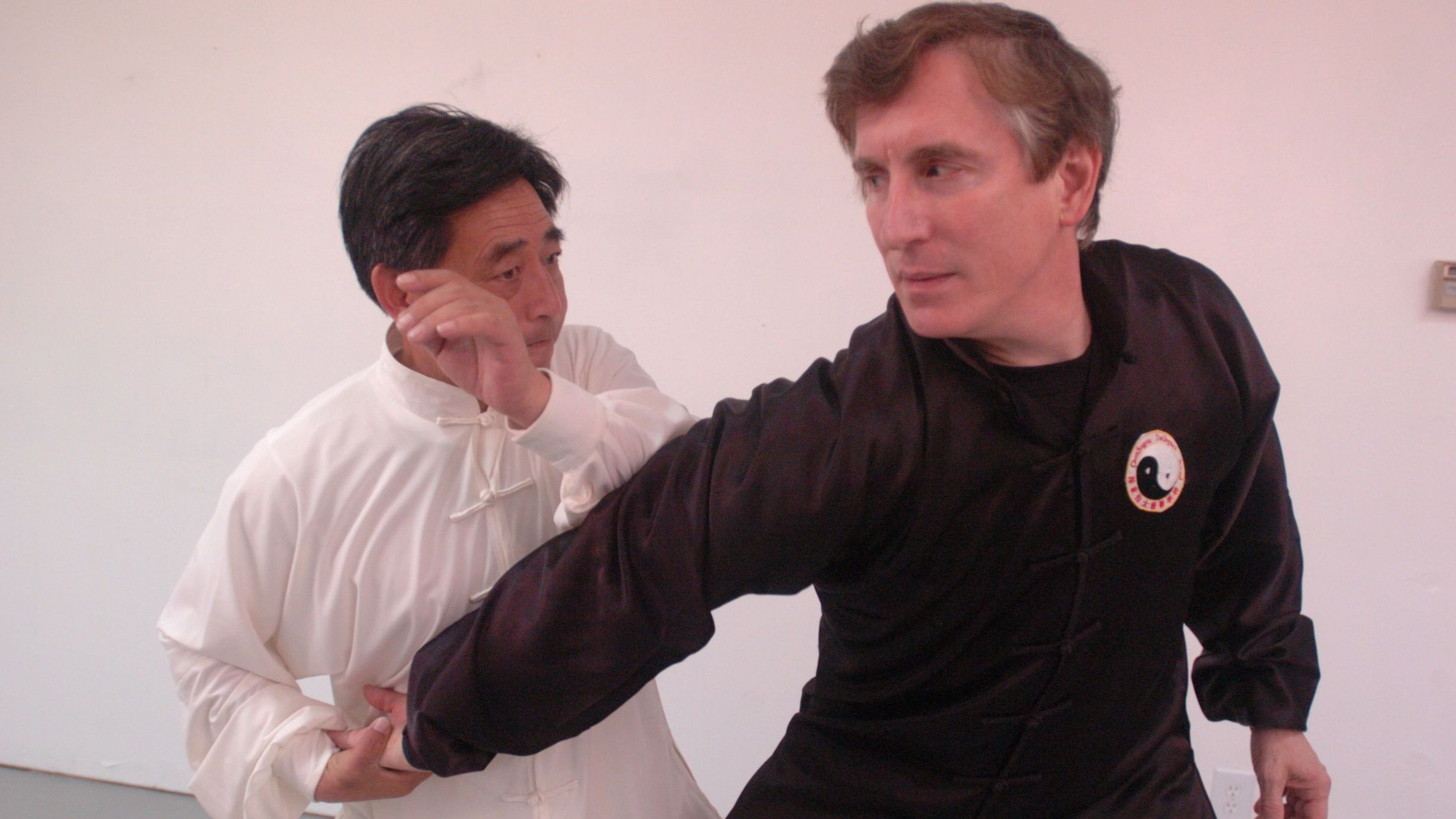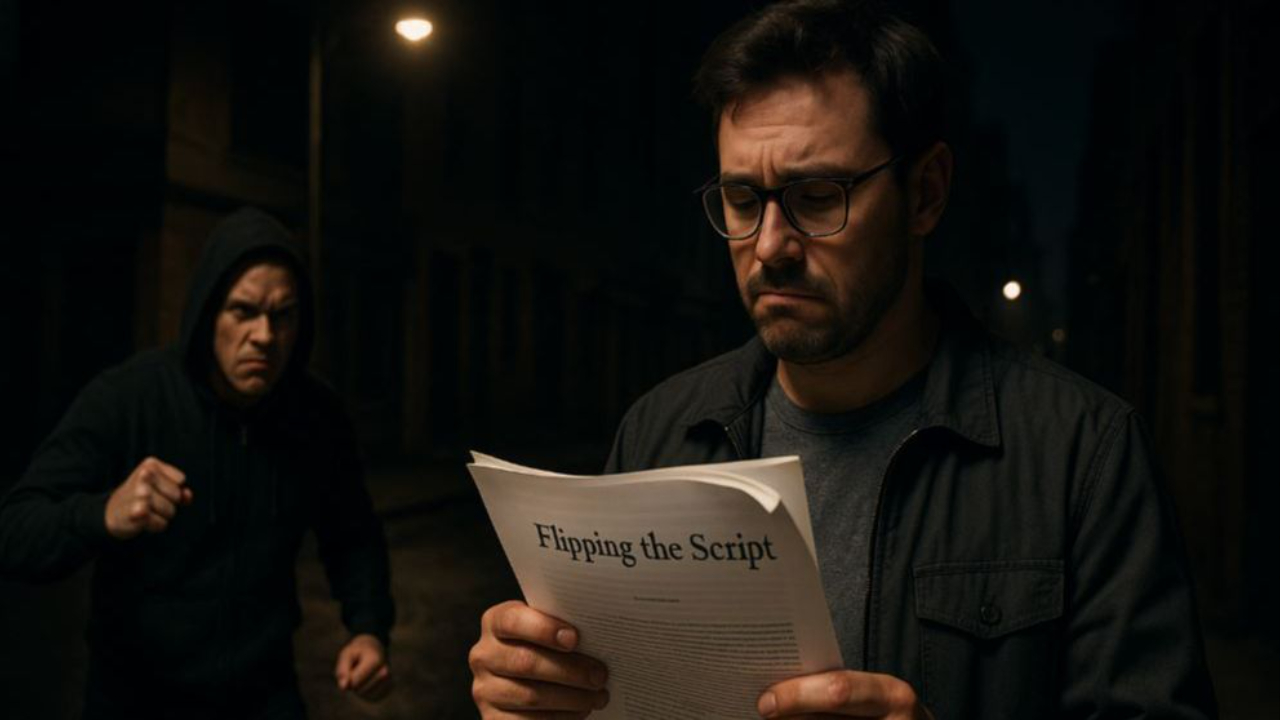Are You Getting This Important Benefit from Your Qigong Practice?

I stepped into the ring, holding my broadsword and feeling butterflies in my stomach. I wanted to do well in my first tournament performance as a black belt.
It was February, 1998 in Cedar Falls, Iowa, and at 45 years old, I had studied different martial arts for 25 years, had been in the internal arts for more than 10 years, and had practiced qigong diligently for more than a decade.
"Just get into the zone," I told myself as I calmed down and prepared to do my broadsword form.
God, there are a lot of people, I thought.
"Settle down," my inner voice said. "Detach. Rise above the pressure."
It was the worst advice I could have given myself.
A few movements into the form, I turned to my right to do a sweeping cut and noticed a young boy was walking across the ring, just a few feet from me.
Within another movement or two, I completely spaced out and forgot where I was in my form. For a flash of a second, I was mentally paralyzed, then I made up some movements, wrapped up the for...
Chen Huixian -- A Great Chen Tai Chi Instructor Living in the U.S.

What would you have if you attended a workshop with a highly-skilled member of the Chen family who deepened your understanding of body mechanics, structure and movement, showed fighting applications that amazed you, spoke English to communicate the information, and made the atmosphere joyful and full of laughter as your legs burned and you sweated and grew stronger?
You would have Chen Huixian, the niece and indoor disciple of Chen Zhenglei who lives in the Kansas City area with her husband Michael Chritton, another talented Chen teacher.
I have learned from Chen Xiaowang, Chen Xiaoxing, Chen Bing, Chen Ziqiang, and I admire each of them. I have learned excellent things from them (and especially from their American students/disciples, who studied with them and other teachers) and would study when them again in a heartbeat. I have had some excellent moments with each one. But the two workshops I have done with Chen Huixian are the most satisfying of any of my experiences in martial ...
Write It Down: How to Get the Most Out of Your Teacher's Corrections

In 2005, I had the opportunity to spend a couple of private days with Grandmaster Chen Xiaoxing. My teacher at the time, the late Mark Wasson, invited me to his home in Livermore, California, for an exclusive opportunity to hang out with him shortly after Xiaoxing arrived in the country for a tour of workshops.
We spent most of the time going through Laojia Yilu, movement by movement. Grandmaster Chen and Mark would watch as I did a movement, then Xaoxing would make comments and gestures, and often hands-on corrections. Mark would listen and watch his comments intently, then interpret with additional instruction.
I was grateful to have such a valuable opportunity.
When I left Mark's home to drive back to San Francisco to the airport, I was a few hours early, so I stopped at a park, went to a table, and started furiously writing notes. I continued on the airplane flying back to the Quad Cities. Starting with the Opening movement, I went step-by-step through the form and wrote down ...
A Fighting Strategy for Self-Defense: Receive and Return

There are seven main fighting strategies in my curriculum. I have begun shooting instruction on these strategies for my website (internalfightingarts.com). I also worked on a pdf document for members of the website to download -- a companion to the video lessons.
The Seven Strategies are:
- Receive and Return
- Lateral Return
- Mutual Striking
- Yield and Overcome
- Control the Center
- Join and Unite
- Instant Resolution
The first one, Receive and Return, is especially useful when I work on sparring with Xingyiquan. It is like pushing on a tree branch. The branch will bend as you push, but when you let go, it will whip you when it springs back.
With Receive and Return, you maintain your distance when your opponent attacks. You move back, load the rear leg, then you spring back when his technique misses its target. You can also spring back between his techniques.
Here are two short clips from tournaments showing me using Receive and Return. In the first clip, a young MMA fighter who h...
Real-Life Self-Defense Story -- the Art of Fighting Without Fighting

What would you do if a big drunk guy walked up to you and wanted to knock your head off?
It happened to one of my website members recently and he called to tell me what happened.
John was standing in a business and talking to someone when a drunk guy walked in and wanted to fight. The drunk was larger than John, and it was clear that he could do some damage.
Like most guys, John's first reaction was to think about fighting techniques. And as the drunk got more agitated, it seemed that violence was about to happen.
Suddenly, John remembered the recent Internal Fighting Arts podcast with my guest, Dan Djurdjevic. In the interview, Dan talked about "flipping the script," and how it got him out of some potentially violent encounters.
When you flip the script, you say something bizarre to the attacker to throw him off-script; to confuse him.
So just as it seemed that a punch was going to be thrown, John said to the drunk, "Did you see the game last night?"
The drunk looked confused....
An Effective Self-Defense Tactic - Flipping the Script

"Hey, what are you looking at?"
Every boy learns to recognize this question. It's one of the first things a bully will say when he chooses you for a target.
It doesn't matter how you answer.
You might say, "I'm not looking at anything."
"What? Are you saying I'm nothing?" the bully will reply.
And then he walks closer. He is ready to fight.
As adults, these types of encounters are not as common, but they do happen. Often, the bully is replaced by someone with more sinister motives -- someone who wants to do us harm.
Dan Djurdjevic is a martial artist from Perth, Australia who has developed the concept of "flipping the script" on someone who is verbally setting up an assault.
You can "flip the script" when you reply to a leading question with something that the potential attacker is not expecting.
For example, he might say, "What are you looking at?"
He is expecting you to be afraid and reply, "Nothing." Then he can continue with his script.
But what if you give him somethi...
10 Quick Ways to Break or Lock an Elbow with Chin-Na Joint Locks

Most traditional martial arts styles give names or numbers to joint-locking techniques. In Chinese chin-na (also spelled qinna), we have names such as "Half Moon," or "Push the Boat Down the Stream." I have always loved these descriptive, poetic names, but sometimes they get in the way.
The best way to learn chin-na is not to memorize names and techniques. The best way is to look at principles -- look at the way joints move -- and then do free-flowing sparring exercises and push hands to practice recognizing opportunities for joint locks when they arise in a fight.
IMPORTANT RULE FOR CHIN-NA:
When someone attacks you, you will NEVER be able to say, "I'm going to get that guy in an Outside Wrist Twist." If that is what you are planning, he will probably knock you out while you are looking for your opportunity.
The best plan is no plan. And that is what practice is for.
You practice with this goal in mind: you want to be able to recognize opportunities for joint locks that arise dur...
43 Years of Flying Sidekicks

I celebrated my 64th birthday two weeks ago by attempting a 6-foot-high flying sidekick.
It was my first attempt at a flying sidekick in three years.
My first attempt ended with me on my butt, and I was so tickled that I cut this short video including some outtakes, along with photos of different attempts beginning in 1974, when I was 21 years old.
This crap doesn't get any easier as you get older, lose a lung, lose muscle mass, and go through heart failure. But one of the reasons I got into martial arts was to have fun.
Take a look and celebrate with me. Hooray for getting old!!!
The "Glimpse" That Keeps Us Coming Back

A Taiji instructor and a former guest on the Internal Fighting Arts podcast, Kimberly Ivy of Seattle, wrote a post on Facebook a few days ago that brought back some vivid memories for me, and reminded me of one reason I have kept coming back to these arts decade after decade, putting myself through the hard work and practice to get better at these skills.
She wrote that some of her long-time students, some of them off-and-on students, told her that it was the occasional "glimpse" they received when practicing that kept them coming back.
Ahh, yes. The "Glimpse."
I first experienced the "Glimpse" around 1980. I had been involved in martial arts for seven years at that point, and I had been studying Zen Buddhism and Taoist philosophy. One of my favorite books was "Zen Buddhism," by Christmas Humphreys. I loved reading the koans -- little anecdotes or riddles that are supposed to make you realize the inadequacy of logical reasoning and to trigger enlightenment: the "Glimpse."
Here is a...
Silk-Reeling Exercises - Fighting Applications of Chan Ssu Jin

I am finishing up production on a new DVD -- actually, a replacement of my original Silk-Reeling Energy DVD, a 2-disc set I did back in 2008.
The new revised version is all on one disc and it should be ready for market next week.
It includes in-depth instruction on 19 silk-reeling exercises that help you put the key body mechanics of the internal arts into action.
I'll announce next week when the DVD is available on my websites and on Amazon.
In the meantime, here is a quick highlight of some fighting applications for silk-reeling exercise number one. We shot applications for each of the SRE exercises for the website. Every movement in Tai Chi has a fighting application, even silk-reeling exercises, which are really just Tai Chi movements.
